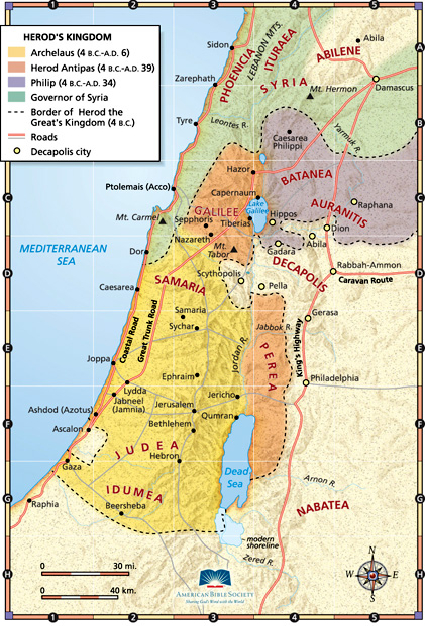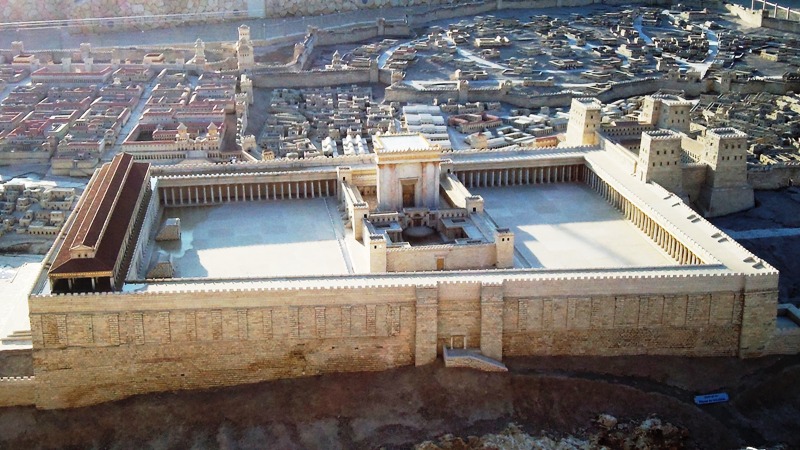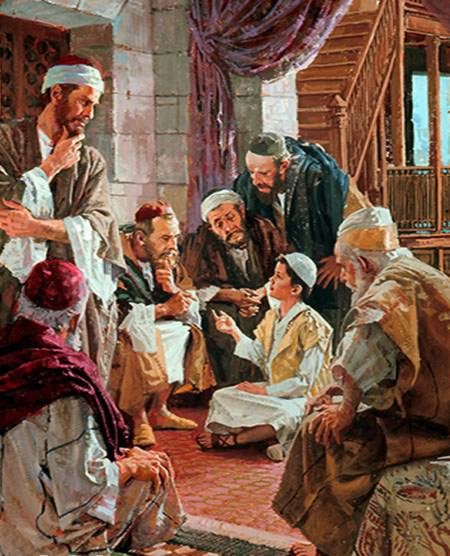A Historical Backdrop
No written document can be truly comprehended without also understanding the basic cultural environment in which it was penned. As such, a brief glimpse into the cultural climate of Jesus’ day & time can prove helpful to understanding the Bible’s texts more deeply, and can provide additional insight into the contents of the same as well. Consider the following …
Political Climate: By the time Jesus was 10 years old, the Romans had taken over rulership of his home-region, and all direct relations between tenant farmers and their landowners had been severed (see Mark 12:1-9). Tax pressures were considerable, leading to open disdain for all “tax collectors”, along with the Roman rulers who employed them (see Luke 15:1-2 & Matthew 18:17). It was even common for Roman soldiers to extort goods & services from the populace (see Matthew 5:41). Jesus “home-base” was Capernaum, a town which lay along the “Great Trunk Road” – a well-traveled major road that connected the large trade-hubs Damascus and Caesarea — the latter having been the lavish resident metropolis of the Roman governor of Judea (mentioned in Acts 8:40, 9:30, 10:24, 11:11, 12:19-33, 18:22, 21:8, 23:23 & 25:1-13). Herod Antipas ruled the region at this time, and resided at Sepphoris (which lay less than 5 miles away from Nazareth) while he built a new grand resident-city, Tiberia (where Jesus and his male family members might very well have worked). This situation gave Jesus ample opportunity to experience the intense social tensions that certainly existed between the Roman occupying forces and his landsmen.
Economic Climate: During the years of Jesus’ life (and extending for many decades beyond) there also existed entrenched class tensions between those who participated in the rural, labor-based economy (the focus of Jesus’ ministry) and those whose lives revolved around the urban, trade-based economy (the focus of Paul’s missionary ministry). Of two-fold interest for the earnest student: A) that the region of Galilee was relatively well-off economically (as evidenced by Galileans only participating in the 1st Jewish revolt for one year before returning to their everyday, comfortably familiar Roman-ruled lifestyle), and B) that fisherman (like the disciples Peter, James & John) were relatively sophisticated traders in their day. Still, most “Christians” were rather poor (1 Corinthians 1:26-30) and class tensions remained piqued during these times (see 1 Corinthians 11:17-34 & James 2:1-13).
Religious Climate: The religious activities of the Jews in Jesus’ day centered in one way or another around The Temple, where Head Priests had been hereditarily installed until Herod began appointing them regardless of lineage (a source of tension that would not have affected Jesus directly, and yet one that existed nonetheless).
At this time, there were three major sects of Jews – the Sadducees (aristocratic & conservative priests), the Pharisees (conservative laymen observing in local synagogues, who became the forefathers of rabbinic Judaism after the Temple’s fall in 70 CE), and the Essenes (a group whose members had completely seceded from Temple-based worship and – like its most famous member, John the Baptist – generally lived lives of austere selflessness). In addition, both the Samaritans (who followed Samaritanism – an Abrahamic religion closely related to Judaism) and the Zealots (whom the historian Josephus called the “fourth sect”, and yet who were primarily a politically active subset of the Pharisees with an extreme attachment to personal liberty, whose radical & violent tactics ultimately contributed to the aforementioned Temple razing) played major cultural roles in the region as well.
For Jews like Jesus, religious education was also divided by one’s sociological status, with only the basics being taught locally (and orally) and any advanced learning requiring the student to travel to a larger urban center. As such, it is intriguing to see Jesus as both the son of a carpenter and simultaneously learned (see Luke 4:16). Religious devotion was also divided along class-lines, with the laboring class expressing devotion via a yearly pilgrimage to the Temple in Jerusalem, and the elites showing their devotion via an intensive interpretive study of Scripture. As such, it was quite provocative for Jesus to shatter these norms by debating with the rabbis in the Temple at the age of 12 (see Luke 2:41-52). It is also important to remember that Jesus was a Jewish reformer, and never intended to create a new religion at all (see Matthew 5:17, coupled with Jesus’ lone Commandments as stated in Matthew 22:37-40 – both of which came directly from the “Old Testament” scriptures of the Torah).







 ;
;